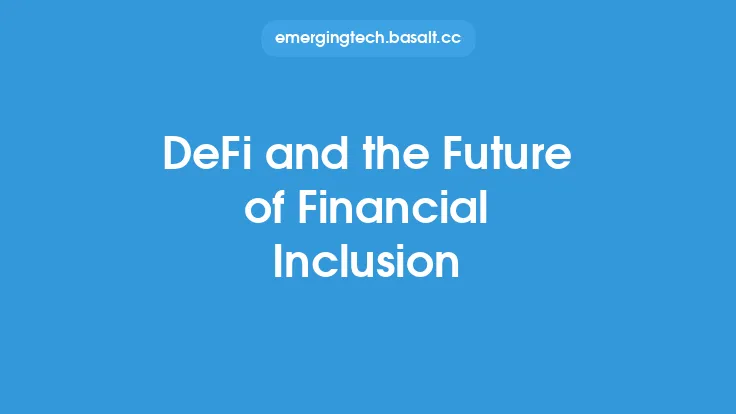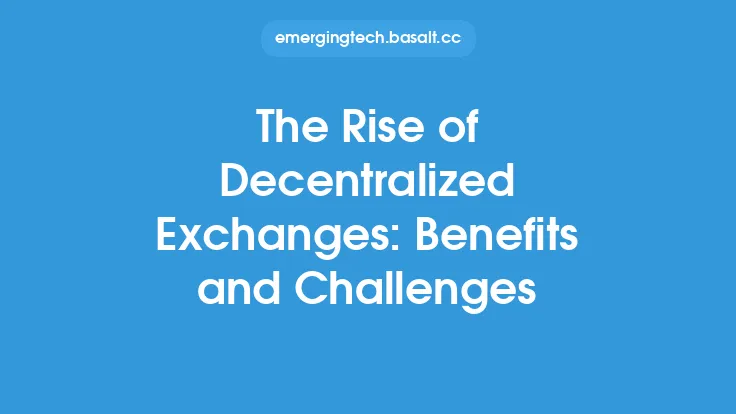The concept of blockchain scalability has been a pressing concern for the industry, as the increasing demand for faster and more efficient transactions has led to a surge in research and development of innovative solutions. One such solution that has gained significant attention in recent years is Layer 2 scaling. This approach involves processing transactions off the main blockchain, thereby reducing the load on the network and increasing its overall capacity. In this article, we will delve into the world of Layer 2 scaling, exploring its underlying principles, benefits, and potential applications in the blockchain ecosystem.
Introduction to Layer 2 Scaling
Layer 2 scaling refers to a set of technologies designed to enhance the scalability of blockchain networks by processing transactions outside of the main chain. This is achieved through the use of secondary frameworks, such as sidechains, state channels, and payment channels, which enable faster and more efficient transaction processing. By offloading transactions from the main blockchain, Layer 2 scaling solutions can significantly increase the network's throughput, reducing congestion and latency.
How Layer 2 Scaling Works
The process of Layer 2 scaling involves several key components, including the main blockchain, secondary frameworks, and smart contracts. The main blockchain serves as the foundation, providing a secure and decentralized platform for transaction settlement. Secondary frameworks, such as sidechains or state channels, are then used to process transactions in parallel, allowing for faster and more efficient transaction processing. Smart contracts are used to manage the flow of transactions between the main blockchain and secondary frameworks, ensuring that all transactions are properly validated and settled.
Benefits of Layer 2 Scaling
The benefits of Layer 2 scaling are numerous, and include increased scalability, improved transaction speeds, and reduced costs. By processing transactions off the main blockchain, Layer 2 scaling solutions can significantly increase the network's capacity, allowing for a greater number of transactions to be processed per second. This, in turn, can lead to faster transaction settlement times, reducing the latency and congestion that often plague blockchain networks. Additionally, Layer 2 scaling solutions can help reduce the costs associated with transaction processing, making it more viable for a wider range of use cases.
Applications of Layer 2 Scaling
The potential applications of Layer 2 scaling are vast, and include a wide range of use cases, from payment processing and gaming to supply chain management and social media. In the realm of payment processing, Layer 2 scaling solutions can enable faster and more efficient transaction settlement, reducing the costs and latency associated with traditional payment systems. In gaming, Layer 2 scaling can provide a seamless and immersive experience, allowing for faster and more efficient transaction processing. Additionally, Layer 2 scaling can be used to enhance the scalability and efficiency of supply chain management systems, enabling faster and more efficient tracking and verification of goods.
Challenges and Limitations
While Layer 2 scaling offers a promising solution to the scalability challenges facing blockchain networks, there are several challenges and limitations that must be addressed. One of the primary concerns is the complexity of implementing and managing Layer 2 scaling solutions, which can require significant expertise and resources. Additionally, there are concerns around the security and decentralization of Layer 2 scaling solutions, which must be carefully designed and implemented to ensure the integrity of the underlying blockchain. Furthermore, the interoperability of Layer 2 scaling solutions with existing blockchain infrastructure is a critical challenge that must be addressed, to ensure seamless integration and adoption.
Future of Layer 2 Scaling
The future of Layer 2 scaling is bright, with ongoing research and development aimed at enhancing the scalability, security, and decentralization of blockchain networks. As the demand for faster and more efficient transaction processing continues to grow, the importance of Layer 2 scaling solutions will only continue to increase. With the potential to enable a wide range of use cases, from payment processing and gaming to supply chain management and social media, Layer 2 scaling is poised to play a critical role in the future of blockchain scalability. As the industry continues to evolve and mature, we can expect to see significant advancements in the development and adoption of Layer 2 scaling solutions, enabling a more scalable, efficient, and decentralized blockchain ecosystem.





